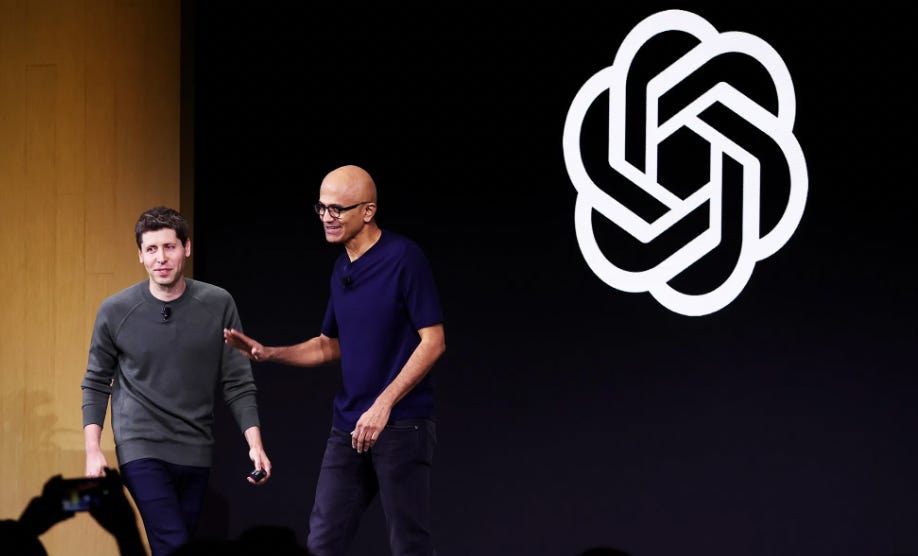Get in Front of 50k Tech Leaders: Grow With Us - Let Us Feature You.
Happy Monday! Another fresh start to improve our lives and sharpen our thinking. Exciting updates today as AI models and robotics continue to evolve, but they also spark safety concerns—will humans become obsolete as we rely on AI for thinking and tasks? On the business side, OpenAI is shifting its structure to secure more funding for its growing AI ambitions. Plus, we’ll dive into new AI tools and trends. We are looking forward to reading your comments. This version adds clarity and flow while keeping it engaging. Brought to you by OpenCV:
📰 AI News and Trends
🌐 Other Tech news
OpenAI To Shift from its Non-Profit Structure.OpenAI plans to shift from its complex non-profit structure to a more traditional for-profit company in 2025 while retaining a non-profit division. CEO Sam Altman shared this change with staff, but specifics are still unclear. Initially launched as a non-profit in 2015, OpenAI formed a for-profit subsidiary to attract more funding, with capped returns for investors like Microsoft. OpenAI’s revenue has surged, driven by ChatGPT subscriptions. This transition aims to scale the company’s operations better while maintaining a non-profit element in its mission, but also allowing higher valuations. Jumpstart Your AI Career with OpenCV University’s 100-Day AI Challenge!100 Days left for the end of the year, are you already ready for a challenge that can turbocharge your AI Career? Check out the 100-DAY AI Career Challenge at OpenCV University Learn cutting-edge AI, Computer Vision, and Deep Learning skills in 100 days! Don’t wait—start your AI journey today and secure your spot in the challenge! Register now and unlock your potential. Use Coupon: “YARO” for a 35% Discount. Are We Approaching the AI Gorilla Problem? The combination of the robot boom and autonomous AI could speed up the "gorilla problem," where AI surpasses humans in cognitive and physical tasks. This raises concerns about humans becoming obsolete, similar to how gorillas were outcompeted by humans. Key risks include "misalignment," where AI's goals may diverge from human values, leading to control and safety issues. Current technical challenges, like navigating unpredictable environments, slow down the widespread adoption of household robots, but advancements could see them integrated in 5 to 10 years. Do We Need an AI Safety Hotline?As AI risks grow, existing safety measures fall short. A new proposal advocates for an AI safety hotline—an anonymous, informal channel where workers can raise concerns with experts before escalating them to formal processes. This "gut check" step, inspired by ombudsperson models in other industries, would complement formal governance tools like whistleblower protections. The hotline could help identify potential AI risks earlier, fostering safer AI development and reporting deepfakes that can be personally damaging. This low-cost, volunteer-based solution could fill a critical gap in AI safety efforts. 🧰 AI ToolsLow Code - No Code V
🚀 Showcase Your Innovation in the Premier Tech and AI Newsletter (link) As a vanguard in the realm of technology and artificial intelligence, we pride ourselves in delivering cutting-edge insights, AI tools, and in-depth coverage of emerging technologies to over 55,000+ tech CEOs, managers, programmers, entrepreneurs, and enthusiasts. Our readers represent the brightest minds from industry giants such as Tesla, OpenAI, Samsung, IBM, NVIDIA, and countless others. Explore sponsorship possibilities and elevate your brand's presence in the world of tech and AI. Learn more about partnering with us. You’re a free subscriber to Yaro’s Newsletter. For the full experience, become a paying subscriber. Disclaimer: We do not give financial advice. Everything we share is the result of our research and our opinions. Please do your own research and make conscious decisions. |
Monday, September 16, 2024
🦍Are We Approaching the AI Gorilla Problem?
Subscribe to:
Post Comments (Atom)




No comments:
Post a Comment